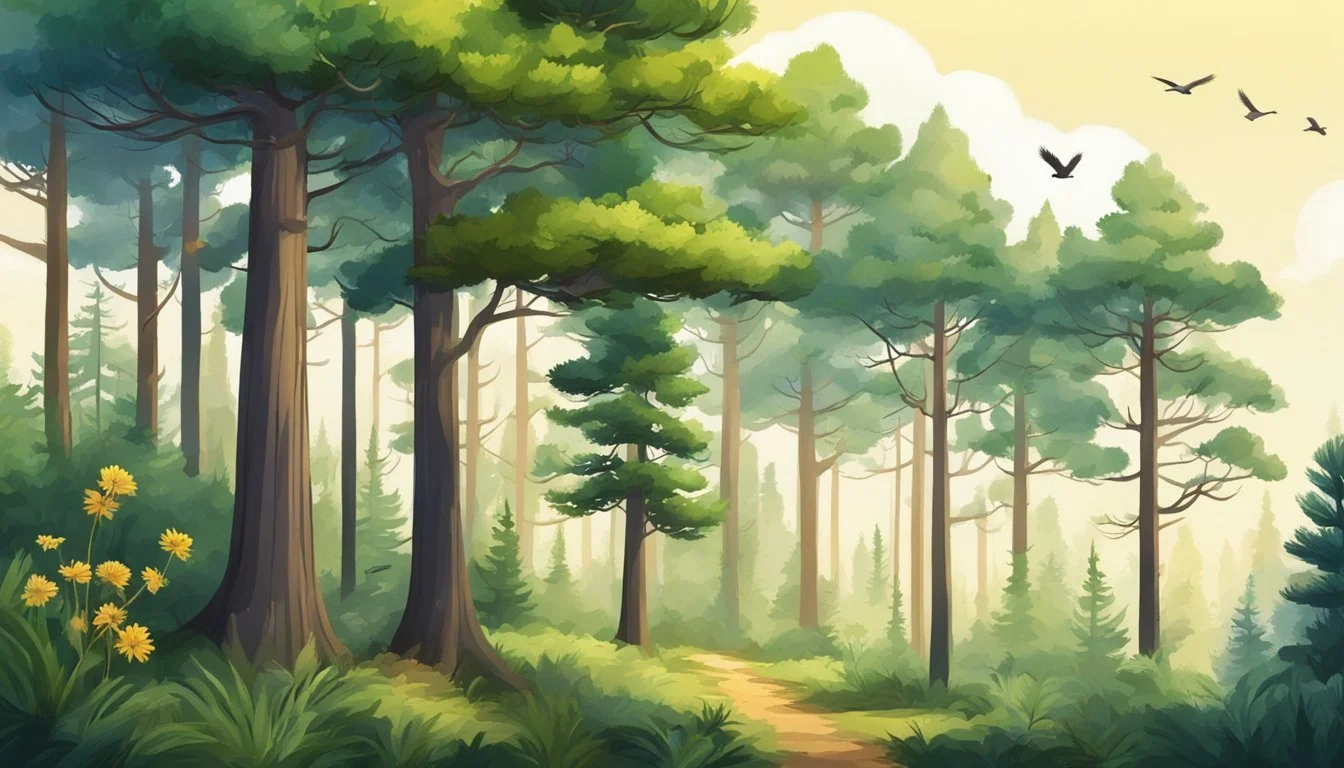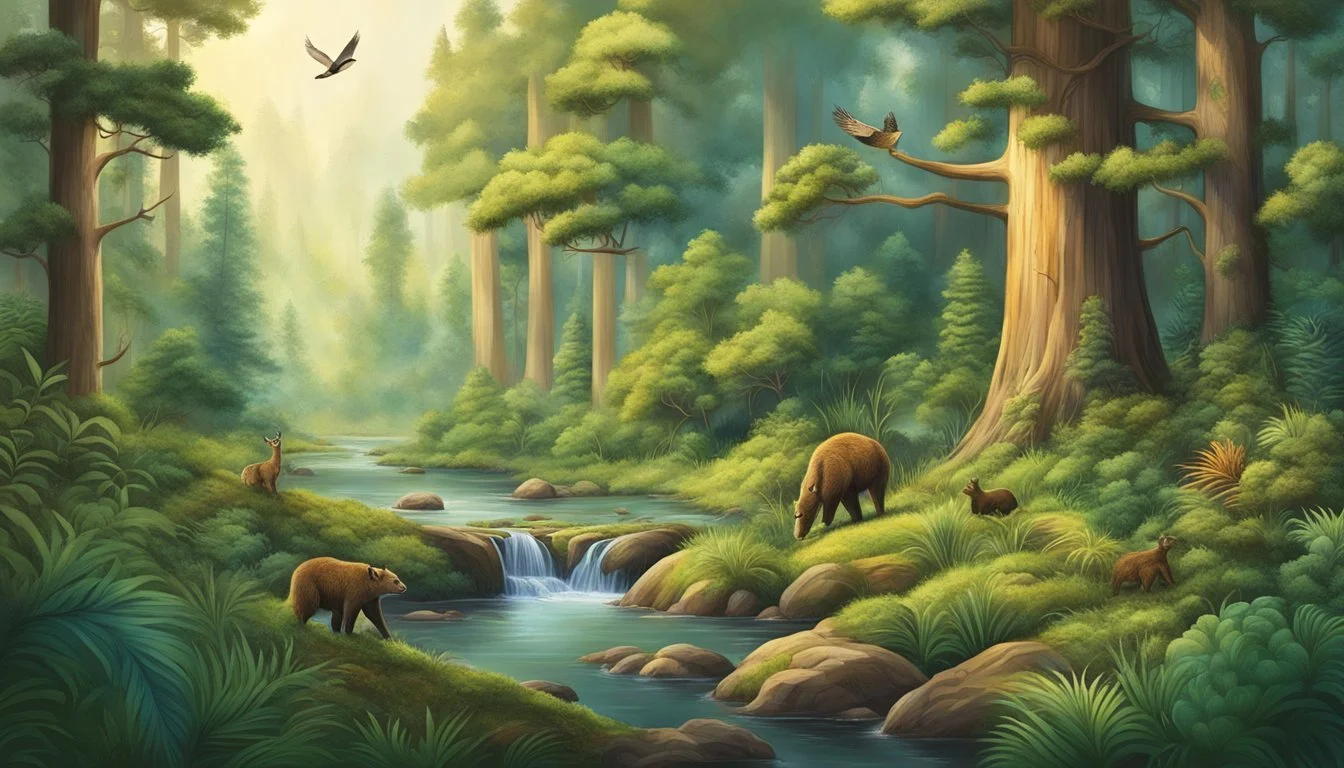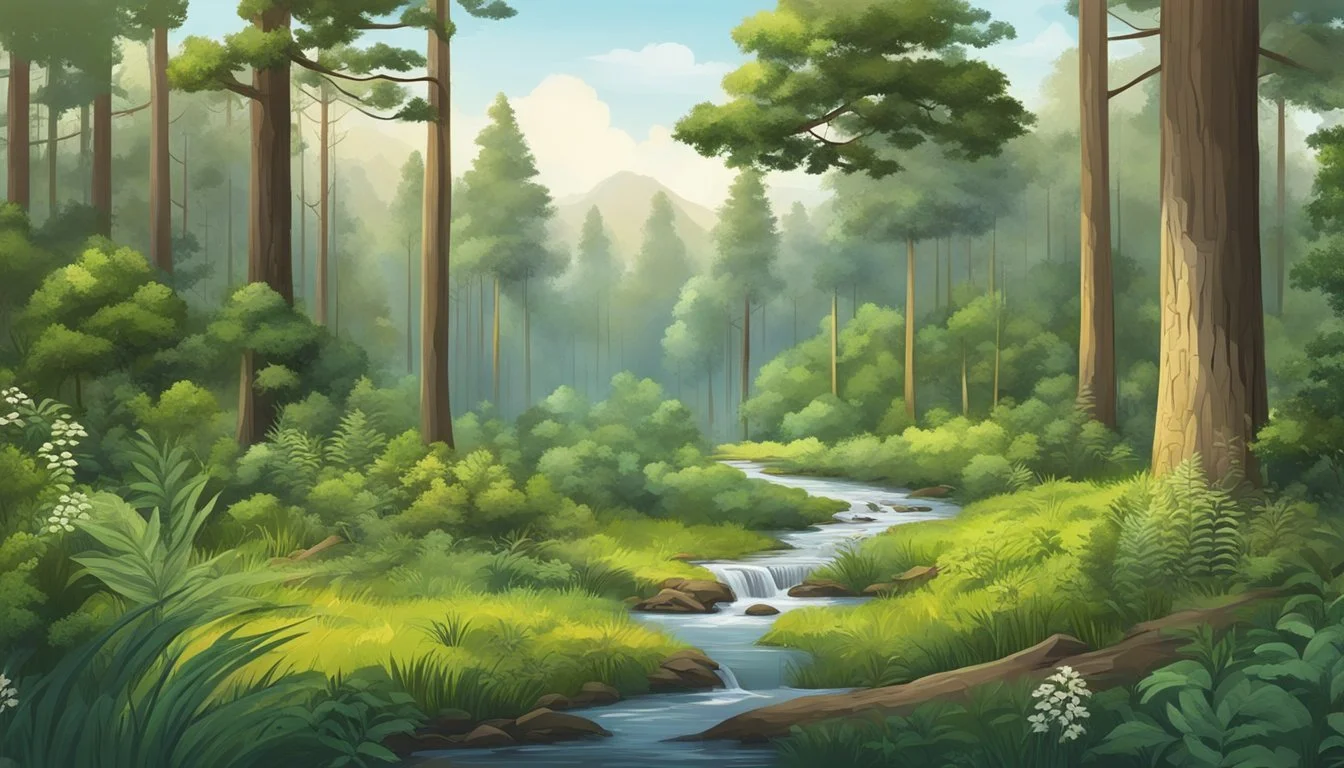Piney Woods Free Land
Opportunities Await in East Texas Forests
Nestled in the heart of East Texas, the Piney Woods region offers a unique opportunity known as "Piney Woods Free Land." Spread across a sprawling landscape of rolling terrain covered with pines, oaks, and rich bottomlands, this area promises a new beginning for those seeking to start fresh in a picturesque environment.
The allure of Piney Woods Free Land lies in its promise of abundant natural beauty and a rich history that dates back to the early days of the Republic of Texas. This region not only serves as a haven for nature enthusiasts but also provides a chance to explore the warmth and Southern hospitality unique to East Texas.
With its tall pine trees and scenic vistas, the region supports a variety of activities from fishing and golf to family outings and historical tours. Those lucky enough to claim land here will find themselves surrounded by an ecosystem teeming with life and opportunities.
History of Piney Woods
The Piney Woods region, stretching across East Texas, Louisiana, and beyond, has a rich history tied closely to early settlers and the advent of the lumber industry. Native American tribes played a significant role in the early days, followed by European settlers and industrial advancements.
Establishment and Expansion
The Piney Woods has been home to the Caddo Indians for thousands of years. They were known for cultivating land and making pottery. This region attracted European explorers in the early 1500s, including Spanish missionaries and French soldiers, each leaving a distinct cultural imprint.
As settlers arrived, they capitalized on the fertile land and dense forests. By the 19th century, the area witnessed significant expansion with the advent of American settlers. Railroads advanced into the Piney Woods, enabling easier access and leading to increased populations and economic activity. The establishment of national forests, such as Sam Houston and Angelina National Forests in Texas, marked efforts to preserve the rich biodiversity.
Lumber Industry's Impact
The lumber industry significantly altered the landscape and economy of the Piney Woods. By the late 19th and early 20th centuries, sawmills dotted the region, cutting vast tracts of pine and hardwoods. This industry spurred rapid infrastructural development but led to substantial deforestation.
Companies like Kirby Lumber Company and others in Louisiana and Texas became central to local economies. The demand for lumber led to the construction of railways and towns. However, this industrial boom came with ecological costs. Conservation efforts began in the mid-20th century, aiming to balance economic needs with environmental preservation, ensuring the resilience and sustainability of the Piney Woods for future generations.
Geography and Climate
The Piney Woods is a vast region extending across parts of East Texas, southern Arkansas, western Louisiana, and southeastern Oklahoma. This area exhibits a diverse ecosystem and distinct climatic patterns, making it a unique and crucial ecoregion in North America.
Ecoregions
The Piney Woods covers approximately 54,400 square miles. This expanse includes rolling terrains, rich bottomlands, and dense forests dominated by pine species such as longleaf, shortleaf, and loblolly pines. The hardwood species including hickory and oak are prevalent in these forests.
The geology of the region varies, with Pleistocene sediment deposits of sand, silt, and clay in the south, and Miocene clays, mudstones, and sandstones centrally situating the Piney Woods. The region contains acidic soils, mostly composed of pale to dark gray sands.
Climate Patterns
The climate in the Piney Woods ranges from humid subtropical in the southern parts to warm temperate further north. This variation results in differing rainfall patterns, with the western areas being drier compared to the eastern parts. Average annual rainfall can be substantial, supporting rich vegetation and dense forest cover.
The Gulf Coast influences the southern climate, moderating temperatures and providing humidity. This ensures the region remains lush and green, contributing to its dense forestation and varied wildlife.
Flora of Piney Woods
The Piney Woods of East Texas are home to a rich biodiversity, featuring a range of towering tree species and understory vegetation that contribute to the region's unique ecosystem. This section explores the main plant life found in these forested areas.
Tree Species
The Piney Woods are characterized by a variety of tree species. The dominant trees include Longleaf Pine, Loblolly Pine, and Shortleaf Pine. Longleaf Pines are notable for their long, slender needles and are a key species due to their ability to withstand fire. Loblolly Pines, which grow rapidly, are often found in moist, lowland areas. Shortleaf Pines, on the other hand, thrive in drier conditions and are distinguished by their relatively shorter needles and smaller cones.
In addition to these pines, hardwood species such as the American Beech, Southern Red Oak, and Willow Oak are also prevalent. These hardwoods add diversity to the forest structure and support various wildlife species. Magnolias, with their large, fragrant flowers, and the Flowering Dogwood, known for its spring blossoms, bring aesthetic beauty to the Piney Woods. The Bald Cypress is another important tree, particularly in swampy areas, recognized for its unique, buttressed trunk and needle-like leaves.
Understory Vegetation
Beneath the towering pines and hardwoods, the understory vegetation is equally diverse. Shrubs such as American Beautyberry and Wax Myrtle provide ground cover and food sources for a multitude of animals. The American Beautyberry is known for its vibrant purple berries, while Wax Myrtle features aromatic leaves and small berries that appeal to birds.
Pitcher plants and various orchid species are also common in the Piney Woods, particularly in the boggy areas. These plants add a unique element to the ecosystem; pitcher plants have a distinctive shape and a carnivorous diet, while the native orchids contribute to the region's floral diversity.
Throughout the understory, you'll also find ferns, wildflowers, and grasses, which all play critical roles in maintaining the health and biodiversity of the Piney Woods. This rich mix of vegetation supports not just the plant community but also a wide array of wildlife, making the Piney Woods a vital and vibrant ecosystem.
Fauna of Piney Woods
The Piney Woods region boasts a rich diversity of wildlife, featuring an array of bird species, mammals, reptiles, and amphibians. Each subsection delves into specific groups of fauna that thrive in this unique ecosystem.
Bird Populations
The Piney Woods is home to a vibrant bird population. Species such as the Red-Cockaded Woodpecker and Brown-Headed Nuthatch are commonly sighted. These birds rely on the pine forests for nesting.
Bachman’s Sparrow and the Pine Warbler add melodious songs to the natural environment. Wild Turkey and Northern Bobwhite provide essential game birds for hunters. At Caddo Lake, birdwatchers can also spot the majestic Bald Eagle patrolling the skies, contributing to the area's diverse avian community.
Mammalian Inhabitants
Regarding mammals, the Piney Woods supports a range of species. The Black Bear and its cousin, the Louisiana Black Bear, roam these forests. Small mammals like the Gray Squirrel and Flying Squirrel are prevalent, often seen darting among the trees.
Deer and River Otter can be spotted near water sources, where they find food and shelter. These mammals are crucial to the ecosystem, balancing the predator and prey dynamics and supporting biodiversity.
Reptiles and Amphibians
The reptile and amphibian populations in the Piney Woods are equally diverse. Various reptiles inhabit the region, benefiting from the warm climate and forest cover.
Amphibians thrive in the numerous wetland areas, contributing to the ecological health of the region. The presence of well-known reptiles and less conspicuous amphibians highlights the ecological richness of the Piney Woods, showcasing the intertwining lives of numerous species within this habitat.
Ecosystem and Biodiversity
The Piney Woods region is a rich and diverse ecosystem, home to a variety of habitats and endangered species that require dedicated conservation efforts. This area, encompassing parts of eastern Texas and extending into Louisiana, Arkansas, and Oklahoma, is notable for its unique blend of pine and hardwood forests, wetlands, and rich biodiversity.
Habitat Conservation
The preservation of various habitats within the Piney Woods is crucial for maintaining its biodiversity. The area includes Mississippi Lowland Forests and Big Thicket, known for their complex ecosystems. The Cypress-Tupelo Swamps represent some of the most biodiverse wetland systems in the United States.
Efforts to conserve these habitats involve protecting native plants such as Southern Sugar Maple, River Birch, American Elm, and diverse ferns. These conservation activities are vital to ensuring the survival of these species and the overall health of the ecosystem.
Management practices also include reforestation projects, which restore the pine and oak forests that have been lost due to logging and development. Maintaining these habitats is essential for supporting the multitude of species that rely on them.
Endangered Species
The Piney Woods hosts numerous endangered species, reflecting its ecological importance. Among these are various plant and animal species that require specific habitats to thrive. The preservation efforts within the Piney Woods are designed to protect these sensitive species from further decline.
Longleaf pine forests once covered a large portion of this area but have been significantly reduced. Rehabilitation of these forests helps protect species such as the red-cockaded woodpecker, an endangered bird that relies on mature pine trees for nesting.
Other critical species include the Louisiana black bear and various amphibians that are dependent on the swamp and wetland environments. The success of these conservation efforts is imperative to prevent the extinction of these species and to maintain the natural heritage of the region.
Conservation programs focus on creating and maintaining suitable habitats, promoting reforestation, and monitoring endangered species populations. These actions are fundamental to ensuring the long-term viability of the Piney Woods ecosystem.
Natural Resources
The Piney Woods region offers an array of natural resources crucial for wildlife and human activities. Key resources include varied water bodies like rivers, lakes, and streams, as well as rich soils that support diverse agricultural practices.
Water Bodies
The Piney Woods is home to numerous water bodies that contribute significantly to the ecosystem. Rivers, streams, and creeks crisscross the area, providing essential habitats for aquatic species.
Lake Livingston stands out as a significant water reservoir, supplying both recreational opportunities and fresh water. Regular rain ensures a consistent water supply, vital for maintaining the lush pine forests and other vegetation.
These water resources are instrumental in supporting regional biodiversity and local communities.
Soil and Agriculture
The soils in the Piney Woods are varied and support a range of agricultural practices. Vertisols, with their high clay content, are excellent for certain crops due to their nutrient retention capabilities.
Ultisols dominate the forests, characterized by acidic properties and good drainage, which are ideal conditions for the region's pine and hardwood forests.
Alfisols are also present, featuring higher fertility, making them suitable for various agricultural activities. These soils contribute to the region’s agricultural diversity and productivity, ensuring sustainable land use and forest management.
Efficient utilization of these soil types aids in the conservation of the Piney Woods’ natural resources, fostering both ecological balance and economic benefits.
Outdoor Activities
Piney Woods offers a wide range of outdoor activities for nature lovers. Visitors can explore national forests and parks, camp under starry skies, hike scenic trails, or observe diverse wildlife in their natural habitat.
National Forests and Parks
The Piney Woods region is home to several significant national forests. Angelina National Forest covers 153,180 acres, with attractions like Boykin Springs Recreation Area that feature waterfalls and historic sites. In Sam Houston National Forest, visitors can find Huntsville State Park, boasting 160 campsites and various outdoor activities.
Davy Crockett National Forest is another gem, offering extensive hiking and camping opportunities. Lastly, the Sabine National Forest covers over 160,000 acres, offering numerous trails and access to the massive Toledo Bend Reservoir.
Camping and Hiking
Camping and hiking are popular activities in Piney Woods. Boykin Springs in Angelina National Forest features the Sawmill Hiking Trail, a 5-mile round trip trail with a waterfall and historic ruins. Sam Houston National Forest offers a variety of campsite options, from primitive to full hook-ups.
Huntsville State Park is ideal for both novice and experienced campers, with amenities like restrooms, showers, and a nature center. The Sawmill Hiking Trail and others offer diverse terrain and scenic views, such as the Neches River.
Wildlife Observation
Wildlife observation is a highlight of Piney Woods. The region's diverse ecosystems support species ranging from white-tailed deer to bald eagles. Huntsville State Park in Sam Houston National Forest has bird blinds for unobtrusive bird watching.
Other areas in the forests provide opportunities to see animals like raccoons, squirrels, and various aquatic species. Lake Fork is known for its largemouth bass, making it a favorite among fishing enthusiasts. The ecosystem's richness ensures a rewarding experience for all wildlife observers.
Conservation Efforts
Conservation efforts in Piney Woods focus on protecting habitats and fostering biodiversity. Both local and federal initiatives play significant roles in maintaining this vital ecosystem.
Local Initiatives
Local initiatives in the Piney Woods region emphasize habitat restoration and species protection. Programs led by organizations like the Texas Parks & Wildlife Department and various non-profit groups focus on replanting native trees, including longleaf pines. These efforts aim to restore the forest that has been reduced to a fraction of its original size.
Another local priority is the protection of the Red-Cockaded Woodpecker, an endangered species. Communities and conservationists work together to create habitats suitable for its nesting and survival. Educational programs also help raise awareness of conservation needs, ensuring ongoing support from residents.
Federal Involvement
Federal involvement supplements local conservation efforts through funding and resource support. The U.S. Fish and Wildlife Service provides vital assistance in managing the Piney Woods’ rich biodiversity. Federal grants help finance large-scale restoration projects and the preservation of critical habitats.
Partnerships with federal agencies enhance efforts to conserve endangered species like the Red-Cockaded Woodpecker. Specific programs are designed to monitor wildlife populations and implement strategies for habitat improvement. Collaboration between federal and local entities ensures a comprehensive approach to conservation that leverages resources and expertise for maximum impact.
Cultural Significance
The Piney Woods region spans several states and serves as a cultural cornerstone for many communities, including the Caddo tribes and present-day residents. This section explores how indigenous and modern influences have shaped this unique area.
Indigenous Influence
Indigenous peoples such as the Caddo Indians held a longstanding connection to the Piney Woods. Their presence in East Texas, particularly around Texarkana, was marked by large settlements and intricate societal structures. They cultivated the land, producing crops and building ceremonial mounds that are still evident today.
These early inhabitants also impacted the landscape, introducing agricultural practices and creating trade networks. Their influence persists in place names and cultural traditions throughout the region. Moreover, the Caddo are credited with giving Texas its name, derived from a word that means "friend" or "ally."
Modern-Day Importance
Today, the Piney Woods remain vital for both ecological and economic reasons. In Texas, areas like Montgomery, Walker, and San Jacinto rely on the forests for timber, recreation, and tourism. The tall pines and diverse hardwoods draw visitors for hiking, bird-watching, and educational tours.
In Louisiana and Arkansas, the Piney Woods support industries such as paper production and sawmills. Oklahoma's southeastern corner also benefits from these forest resources. The region has adapted to modern needs while preserving its natural beauty and continuing to serve as a cultural hub for local communities.
Key Areas:
Texas: Montgomery, Walker, San Jacinto, Texarkana
Louisiana, Arkansas, Oklahoma: Ecological and economic contributions
The cultural significance of the Piney Woods is deeply rooted in both its indigenous heritage and its ongoing relevance to contemporary society.
Economic Impact
The Piney Woods region plays a crucial role in the economy through its extensive forestry and burgeoning tourism sectors. These industries have significant implications for local communities and the broader economic landscape.
Forestry and Lumber
Forestry forms a backbone of the Piney Woods' economy. The region's vast Piney Woods ecoregion, part of the larger Gulf Coastal Plain, is prime territory for the lumber industry. Pine trees dominate the landscape, providing a steady supply of timber.
The lumber industry fuels local economies by creating jobs and generating significant revenue. Mills and processing plants dot the region, emphasizing sustainable practices to balance economic benefits with environmental conservation.
Demand for wood products continues to drive production, and advancements in forestry technology have enhanced efficiency and output, ensuring the industry remains a vital economic pillar.
Tourism and Recreation
Tourism contributes heavily to the economic vitality of Piney Woods. The area's natural beauty, including dense forests, wetlands, and diverse ecosystems, attracts visitors year-round. Activities like hiking, camping, and bird-watching are popular. These recreational opportunities draw tourists seeking outdoor experiences.
Local businesses benefit from this influx of visitors. Restaurants, hotels, and shops see increased patronage, boosting local revenues. Moreover, events and festivals showcasing the region's natural heritage and cultural history further enhance the tourism industry's impact. This growth in tourism not only supports existing businesses but also encourages new enterprises to cater to the increasing number of visitors.












